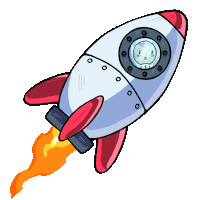STATUS BANK
























| INFORMASI SITUS | ||
|---|---|---|
| Nama Situs | Syair HK | |
| Jenis Permainan | 🔥 Syair HK Hari ini, 🔥 Angka Syair HK, 🔥 Prediksi Syair HK | |
| Minimal Deposit | Rp 10.000 | |
| Metode Deposit | 💸Transfer Bank 💸E-Wallet 💸Qris | |
| Mata Uang | IDR (Indonesian Rupiah) | |
| Jam Operasional | 🕒24 Jam Online | |
| Rating | ⭐⭐⭐⭐⭐158,758,768 User | |
Syair HK Malam | Prediksi & Kode Syair Togel Hongkong 2025
Pernah nggak sih kamu duduk termenung sambil mandangin Syair HK malam, berharap bisa nemu angka jitu tapi ujung-ujungnya zonk? Tenang, kamu nggak sendiri. Banyak kok yang ngalamin hal sama, termasuk saya waktu awal-awal kenal dunia togel. Waktu itu saya pikir, "Ah gampang, tinggal tebak-tebakan angka aja." Tapi ternyata, membaca Syair HK itu bukan soal asal tebak, tapi perlu kombinasi antara logika dan rasa.
Apa Itu Syair HK?
Buat kamu yang baru nyemplung ke dunia ini, Syair HK adalah semacam puisi atau rangkaian kata puitis yang dibuat untuk menyampaikan kode angka secara tersirat. Syair ini biasanya dirilis tiap malam sebelum hasil togel Hongkong keluar. Di dalamnya, ada petunjuk angka yang bisa kamu tafsirkan jadi angka main, angka kepala, atau ekor.
Kenapa Banyak Orang Gagal Baca Syair HK?
Masalahnya satu: terlalu buru-buru dan cuma pakai logika doang. Syair itu unik. Kadang petunjuknya nggak literal. Ada metafora, ada permainan kata, bahkan kadang pakai simbol-simbol yang maknanya nggak langsung kelihatan. Orang yang ngandelin rumus doang bisa kejebak, karena mereka nggak nangkep "rasa" yang disisipkan si pembuat syair.
Langkah-Langkah Membaca Syair HK Malam
Tenangkan Pikiran
Jangan baca Syair HK dalam keadaan buru-buru atau penuh tekanan. Syair itu butuh ketenangan biar bisa ditafsirkan dengan jernih.
Baca Berulang
Bacalah syairnya beberapa kali. Rasakan iramanya. Kadang di bacaan ke-3 atau ke-4, makna angka mulai muncul.
Cari Kata Kunci
Dalam Membaca Syair HK, biasanya ada kata kunci seperti "tinggi", "genap", "ganjil", atau benda tertentu yang berkaitan dengan angka. Misalnya, "burung terbang di awan" bisa mengarah ke angka 2 (simbol burung).
Gunakan Rasa
Ini bagian yang sering dilupakan. Kadang kamu "ngerasa" angka tertentu muncul pas baca syair. Itu bukan kebetulan. Itu intuisi. Dan sering banget, intuisi ini justru yang paling akurat.
Cocokkan dengan Kode Buntut
Setelah kamu nemu angka yang "berasa cocok", cocokin sama kode buntut atau hasil keluaran sebelumnya. Cek polanya. Syair HK biasanya nggak berdiri sendiri.
Contoh Tafsir Syair HK Malam Ini
Misal syairnya begini:
Langit gelap bintang tertutup
Angin berdesir menyapu bayang
Dua ekor rusa lari ke hutan
Satu diam, satu hilang
Nah, dari sini kamu bisa tafsirkan:
Langit gelap = angka rendah (mungkin 0-4)
Dua ekor rusa = angka 2, atau kombinasi 22
Satu diam, satu hilang = mungkin kombinasi angka yang hilang dari data kemarin
Perlukah Ikut Kode Syair HK yang Beredar?
Banyak banget sekarang yang ngasih Syair HK lewat forum, grup WA, sampai channel Telegram. Boleh aja kamu ikutin, tapi saring dulu. Jangan telan mentah-mentah. Lihat dulu rekam jejak si pembuat syair, apakah sering tembus atau sekadar asal-asalan.
Tips Tambahan Buat Kamu yang Ingin Konsisten Menang
Kumpulkan Syair HK harian: Bikin catatan sendiri biar bisa analisa pola mingguan.
Gabungkan data dan insting: Jangan cuma pakai salah satu, keduanya saling melengkapi.
Jangan terlalu sering ganti gaya: Konsistensi itu penting dalam dunia prediksi.
Cara Membaca Syair HK Dengan Mudah
Membaca Syair HK itu sebenarnya seni. Butuh latihan, ketenangan, dan rasa percaya diri. Jangan gampang menyerah cuma karena zonk sekali dua kali. Justru di sanalah kamu belajar. Gabungkan logika dan rasa, karena di situlah letak kekuatan utama dari tafsir Syair HK malam. Siapa tahu, malam ini justru giliran kamu yang tembus angka jitu!
Tetap semangat, dan semoga Syair malam ini membawa hoki untuk kamu. Kalau kamu punya tafsir atau cara baca unik versi sendiri, boleh dong share di kolom komentar. Mungkin ini bisa menjadi salah satu inspirasi buat yang lain!







